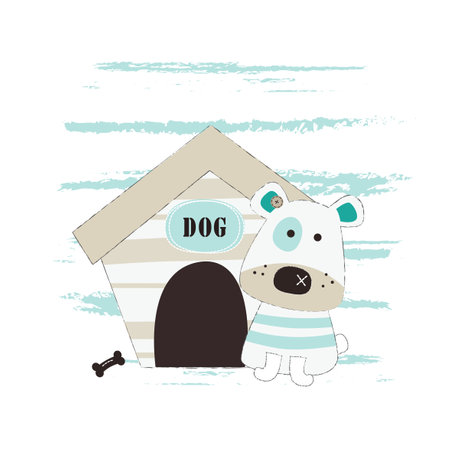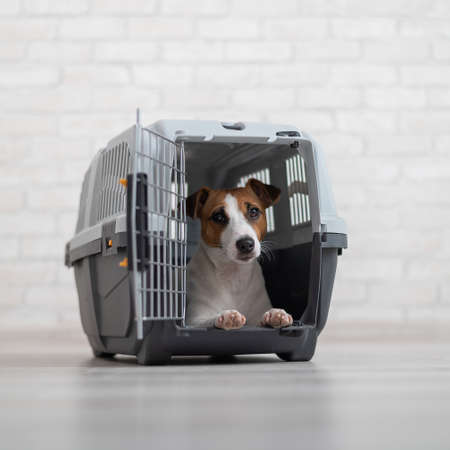1. Understanding Your Pet’s Needs
Before designing a custom pet bed, it’s important to understand your pet’s specific needs. Every pet has different sleeping habits, body sizes, and comfort preferences. By considering these factors, you can create a bed that provides maximum relaxation and support.
Assessing Your Pet’s Sleeping Habits
Pets have unique sleeping styles, and their preferred positions can help determine the best bed design. Here are some common sleeping styles and suitable bed types:
| Sleeping Style | Recommended Bed Type |
|---|---|
| Curling Up | Bolster or donut-shaped bed for added warmth and security |
| Sprawling Out | Flat, large cushion-style bed for extra space |
| Nesting or Burrowing | Cave-style or covered bed for a cozy feel |
| Leaning Against Something | Beds with raised edges or bolsters for support |
Considering Your Pet’s Size
A well-fitted bed should allow your pet to stretch out comfortably without feeling cramped. Measure your pet while they are lying down in their natural resting position and add a few inches for extra space.
Sizing Guidelines:
- Small Pets (under 15 lbs): Beds around 18-24 inches in length
- Medium Pets (15-40 lbs): Beds around 24-36 inches in length
- Large Pets (40-80 lbs): Beds around 36-48 inches in length
- X-Large Pets (80+ lbs): Beds 48 inches or larger in length
Catering to Special Requirements
If your pet has specific health conditions or sensitivities, choosing the right materials and support features is essential. Some factors to consider include:
- Aging or Arthritic Pets: Orthopedic memory foam beds provide joint support.
- Anxious Pets: Calming beds with soft, plush materials help reduce stress.
- Pets Prone to Allergies: Hypoallergenic fabric covers minimize irritation.
- Chewers or Scratchers: Durable, tear-resistant fabrics ensure longevity.
The more you understand your pet’s needs, the better you can design a custom bed that ensures their comfort and happiness.
2. Choosing the Right Materials
When designing a custom pet bed, selecting the right materials is key to ensuring comfort, durability, and style. From fabric choices to padding and frame options, every element should suit your pet’s needs and lifestyle.
Fabric Options
The fabric you choose will determine how cozy and easy to clean the pet bed is. Here are some common options:
| Fabric Type | Benefits | Best For |
|---|---|---|
| Cotton | Soft, breathable, and machine washable | Pets who love softness and warmth |
| Microfiber | Durable, stain-resistant, and easy to clean | Pets prone to messes or allergies |
| Faux Fur | Ultra-soft and cozy for added warmth | Pets that love snuggling into plush surfaces |
| Canvas | Heavy-duty and resistant to wear and tear | Active pets or outdoor use |
| Waterproof Fabric | Resistant to spills and accidents | Puppies, senior pets, or those with incontinence issues |
Padding Choices for Maximum Comfort
The right padding ensures your pet has a comfortable place to rest. Consider these options:
- Memory Foam: Ideal for older pets or those with joint issues as it provides excellent support.
- Polyester Fiberfill: Soft and fluffy, offering a plush feel for pets that love sinking into their beds.
- Orthopedic Foam: A firmer option that helps relieve pressure on joints—great for senior dogs and cats.
- Cedar Chips: Naturally repels odors and insects while adding a slight cushion effect.
- Recycled Foam Scraps: An eco-friendly option that provides varied support levels.
Frame Options for Stability and Style
If you want a structured pet bed rather than just a cushion, consider different frame styles:
- Wooden Frames: Sturdy, stylish, and can be customized to match home decor.
- Metal Frames: Durable and resistant to chewing—ideal for larger breeds.
- Plastic Frames: Lightweight, easy to move, and simple to clean.
- No Frame (Cushion-Only): Perfect for portability and easy storage when not in use.
- Elevated Beds: Helps with airflow, keeping pets cool during warm weather.
Selecting the Best Materials for Your Pet’s Needs
Your choice of materials should reflect your pet’s habits and preferences. If they tend to overheat easily, breathable fabrics like cotton or canvas may be best. For pets with joint problems, orthopedic foam can provide much-needed support. Additionally, if your pet has accidents frequently, waterproof fabrics and easy-to-clean padding are essential.
A Quick Tip!
If youre unsure about what material your pet prefers, test out different fabrics by placing small swatches in their favorite resting spots. Observe which one they gravitate towards most!
By carefully choosing the right materials for your custom pet bed, you’ll create a space that’s not only comfortable but also long-lasting. The right combination of fabric, padding, and frame will ensure that your furry friend enjoys their bed for years to come.

3. Designing for Function and Style
When designing a custom pet bed, its important to strike the right balance between functionality and aesthetics. Your furry friends comfort is a priority, but you also want the bed to blend seamlessly with your home décor. Here’s how you can achieve both.
Choosing the Right Materials
The materials you choose should be both durable and cozy. Consider these options:
| Material | Benefits |
|---|---|
| Memory Foam | Great for older pets or those with joint issues. |
| Cotton Fabric | Soft, breathable, and easy to clean. |
| Waterproof Covers | Ideal for pets prone to accidents or spills. |
| Faux Fur | Adds warmth and a luxurious feel. |
Incorporating Colors and Patterns
Selecting the right colors and patterns ensures that your pet bed enhances your homes aesthetics rather than clashing with it. Keep these tips in mind:
- Neutral Tones: Beige, gray, or soft pastels work well in most home settings.
- Bold Accents: If your décor features bright colors, consider a pet bed with matching or complementary shades.
- Patterned Fabrics: Stripes, plaids, or geometric designs can add personality while hiding pet hair and stains.
Shape and Size Considerations
The shape of the pet bed should cater to your pet’s sleeping habits while fitting nicely within your living space.
| Bed Shape | Best For |
|---|---|
| Round/Donut | Curling up and feeling secure. |
| Rectangular | Pets who sprawl out while sleeping. |
| Cave/Nest Style | Pets that love burrowing or extra warmth. |
| Bolster Bed | Pets that like resting their heads on raised edges. |
Blending Style with Functionality
A well-designed pet bed should look great without sacrificing comfort. Consider these design ideas:
- Elevated Beds: These provide better airflow and keep your pet cooler in warm climates.
- Multi-Use Furniture: Beds that double as an ottoman or fit under a bench save space while looking stylish.
- Themed Beds: Match the pet bed’s style with your room’s theme—modern, rustic, or bohemian.
- Name Personalization: Embroider your pet’s name on the bed for a custom touch.
Final Thoughts on Design Choices
Your pets bed is more than just a place to sleep—it’s part of your home. By carefully selecting materials, colors, shapes, and styles, you can create a comfortable and aesthetically pleasing space for your furry friend while maintaining harmony with your home décor.
DIY vs. Buying Custom Beds
When it comes to custom pet beds, you have two main options: making one yourself or purchasing a professionally crafted bed. Both choices come with their own advantages and drawbacks, so lets break them down to help you decide which is the best fit for you and your furry friend.
Benefits of DIY Pet Beds
Creating a pet bed yourself allows for complete customization. You can choose materials, colors, and designs that perfectly match your home decor and your pets needs. Additionally, DIY projects can be budget-friendly if you use recycled or affordable materials.
Pros of DIY:
- Customization: You have full control over size, shape, and fabric choices.
- Cost-effective: Can be cheaper than buying a high-end custom bed.
- Personal Touch: Adds sentimental value when made by hand.
Cons of DIY:
- Time-consuming: Requires effort and skill to craft properly.
- Durability Concerns: May not be as sturdy as professionally made beds.
- Limited Material Access: Finding high-quality materials can be challenging.
Benefits of Buying a Custom Pet Bed
If you prefer convenience, purchasing a professionally made custom pet bed might be the better option. These beds are often designed with high-quality materials and ergonomic support for pets.
Pros of Buying:
- High-Quality Materials: Crafted with durable and pet-safe fabrics.
- Saves Time: No need to spend hours designing and building.
- Professional Craftsmanship: More likely to last longer than a DIY version.
Cons of Buying:
- Higher Cost: Custom-made beds can be expensive.
- Lack of Personalization: Limited to available styles and sizes from manufacturers.
- Possible Sizing Issues: Pre-made options may not fit your pet perfectly.
A Quick Comparison
| DIY Pet Bed | Bought Custom Bed | |
|---|---|---|
| Cost | $ (Cheaper if using recycled materials) | $$$ (More expensive but professionally made) |
| Time Investment | Takes time and effort to create | No effort needed—just purchase and use |
| Lifespan & Durability | Might wear out faster depending on materials used | Tends to last longer due to professional craftsmanship |
| Aesthetic & Personalization | You can fully customize everything | You may have limited design choices |
| Sustainability | You can use eco-friendly or recycled materials | Sustainability depends on the manufacturer’s practices |
The Right Choice for You?
If you enjoy crafting and want a personal touch in your pet’s bed, DIY might be the way to go. However, if convenience and durability are your priorities, investing in a professionally made custom pet bed could be worth it. Consider your budget, time, and skills before making a decision!
5. Maintaining and Cleaning Your Pet Bed
Keeping your custom pet bed clean and well-maintained is essential for your furry friends health and comfort. Regular cleaning helps prevent odors, allergens, and bacteria from building up. Here are some simple tips to keep your pet bed fresh and long-lasting.
Regular Cleaning Routine
To make sure your pet bed stays in top shape, follow a consistent cleaning schedule. The frequency of cleaning depends on factors like shedding, outdoor activity, and any accidents that may happen.
| Cleaning Task | Frequency |
|---|---|
| Vacuuming the bed | Once a week |
| Washing the cover | Every 1-2 weeks |
| Deep cleaning the entire bed | Once a month |
| Spot cleaning stains or messes | As needed |
Laundering Pet Bed Covers
If your custom pet bed has a removable cover, washing it regularly is an easy way to maintain cleanliness. Use mild detergent and wash in cold water to prevent fabric damage. Always check the care label for specific instructions.
Tumble Dry vs. Air Dry
If the cover is dryer-safe, tumble dry on low heat. Otherwise, air drying is best to prevent shrinkage and preserve fabric quality.
Treating Stains and Odors
Pets can have accidents or track in dirt, leading to stains and odors. Spot clean using a mixture of water and mild detergent or baking soda for odor control. For tougher stains, enzyme-based cleaners work well without harming your pet.
Keeping the Bed Fresh Between Washes
- Shake out debris: Remove loose hair, dirt, and crumbs daily.
- Baking soda refresh: Sprinkle baking soda on the bed, let it sit for 15 minutes, then vacuum.
- Paw cleaning: Wipe your pet’s paws before they get into bed to reduce dirt buildup.
Selecting Easy-to-Clean Materials
If you’re still designing your custom pet bed, consider materials that are easy to clean. Waterproof liners help protect against accidents, while machine-washable fabrics save time on maintenance.
The Importance of Regular Maintenance
A well-maintained pet bed not only lasts longer but also provides a healthier sleeping space for your furry friend. By following these simple steps, you can ensure your pet’s comfort while keeping their resting area fresh and clean.


